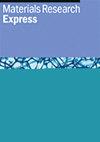铁铬铝基涂层的高温铅铋共晶(LBE)耐腐蚀性和压缩性能调查与评估
IF 2.2
4区 材料科学
Q3 MATERIALS SCIENCE, MULTIDISCIPLINARY
引用次数: 0
摘要
研究了 Fe15Cr11Al2Si、Fe15Cr11Al0.5Y 和 Fe15Cr11Al2Si0.5Y 涂层的高温铅铋共晶(LBE)耐腐蚀性和环压性能。即使腐蚀试验温度达到 800 ℃,所有这些涂层都能有效保护覆钢管。腐蚀试验温度超过 660 ℃ 后,涂层表面形成了明显的富铝氧化层,涂层与基体之间的界面出现了铝元素富集。在 800 °C 的腐蚀试验后,Fe15Cr11Al2Si0.5Y 涂层的厚界面层出现了孔洞。在变形率为 3% 的环压试验后,Fe15Cr11Al2Si 涂层开裂,变形率达到 5% 后涂层脱落。当变形率达到 5%时,Fe15Cr11Al0.5Y 涂层仍然没有开裂。当变形率达到 30% 时,涂层开裂,但开裂的涂层仍与基体紧密结合。Fe15Cr11Al2Si0.5Y 涂层的压缩性能最差,即使变形率为 1%,涂层仍会明显剥落。讨论了耐腐蚀性和抗压性演变的内在机理。本文章由计算机程序翻译,如有差异,请以英文原文为准。
Investigation and evaluation of high-temperature lead-bismuth eutectic (LBE) corrosion resistance and compression performance of the FeCrAl-based coatings
The high-temperature lead-bismuth eutectic (LBE) corrosion resistance and ring compression performance of the Fe15Cr11Al2Si, Fe15Cr11Al0.5Y, and Fe15Cr11Al2Si0.5Y coatings were investigated. Even if the corrosion test temperature reaches 800 °C, all these coatings can effectively protect the steel cladding tube. After the corrosion test temperature exceeded 660 °C, an obvious Al-rich oxide layer was formed on the surface of the coating, and Al element enrichment occurred at the interface between the coating and the substrate. After the corrosion test at 800 °C, holes appeared in the thick interface layer of the Fe15Cr11Al2Si0.5Y coating. The Fe15Cr11Al2Si coating cracked after the ring compression test with a deformation rate of 3%, and the coating peeled off after the deformation rate reached 5%. When the deformation rate reached 5%, there was still no cracking in the Fe15Cr11Al0.5Y coating. When the deformation rate reached 30%, the coating cracked, but the cracked coating was still tightly bonded with the substrate. The Fe15Cr11Al2Si0.5Y coating has the worst compression performance, even if the deformation rate is 1%, the coating still peels off obviously. The underlying mechanism for the evolution of corrosion resistance and compression performance was discussed.
求助全文
通过发布文献求助,成功后即可免费获取论文全文。
去求助
来源期刊

Materials Research Express
MATERIALS SCIENCE, MULTIDISCIPLINARY-
CiteScore
4.50
自引率
4.30%
发文量
640
审稿时长
12 weeks
期刊介绍:
A broad, rapid peer-review journal publishing new experimental and theoretical research on the design, fabrication, properties and applications of all classes of materials.
 求助内容:
求助内容: 应助结果提醒方式:
应助结果提醒方式:


